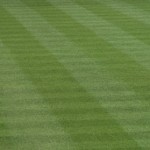There is a lot of confusion about fungal turf diseases.
The main issues that worry many people are as follows:
- Accurate disease identification; not sure what we have so don’t know what to use.
- Contamination being brought onto a clean green from a diseased green via bowlers’ feet and/or contractors machinery.
- Fungicide rotation to prevent immunity
- Repeat infection of greens
- Disease Forecasts and what to do about them.
Let’s have a look at these in order:
Accurate Disease Identification.
Although it is always prudent to make sure you know exactly what fungal disease you have, the fact remains is that you have a fungal disease on your green and regardless of what it is, it is merely a symptom of other factors. So the urgent requirement is to stop it spreading any further. Broad spectrum fungicides do exactly as you would imagine, they kill most fungal pathogens so if you are using an up to date contact fungicide, you will more than likely be successful in stopping the disease with an application.
However, this is analogous with continually taking pain killers, but never going to the doctor to find out what is causing the pain. There are some more in-depth articles on symptoms and causes on bowling greens here.
Contamination by feet or machinery.
This crops up several times a year in my travels. I even see trays of disinfectant being left out for bowlers to walk through before going onto the green…and unfortunately the green is more likely to be adversely affected by the disinfectant than anything that could possibly come in on a machine or shoe.
The fact is that many of the common fungal disease pathogens like fusarium, red-thread, anthracnose etc are already present in your green, but they only cause problems when we make the conditions favourable for them, by allowing the green to become excessively thatchy and/or weak and waterlogged.
Fungicide rotation/ repeat Infection
Last year I visited a golf course to give advice. They were looking for an expert witness to prove that a manager had made the wrong decision in using the same fungicide two years in a row and now the greens were riddled with fusarium.
The greens were truly awful but the club had missed the point completely. The issue wasn’t the incorrect selection of chemical; it was the blind reliance on treating symptoms instead of working towards a healthy sward/soil relationship.
There was in excess of 3 inches of smelly, waterlogged, yellow, anaerobic thatch on every green. There isn’t a fungicide in the world that could keep disease at bay in such conditions.
Disease Forecasting
I know this scare-mongering tactic has caught on in recent years as a fungicide selling tool, but come on! This is absolute nonsense for all of the reasons noted above. Regardless of what the disease forecast says; if your green is in healthy condition as per our performance green standard, disease will not get a hold to any detrimental degree.
There are more in depth articles on turf disease, its causes and cures here.

